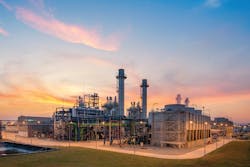A seasoned project engineer who had come on board specifically to lead the carbon-capture effort, Dan’s last project experience had been way back when before the 2020 pandemic, and he’d wished then that control system configuration wasn’t such a manual, in-the-weeds process. “We’d start with the piping and instrumentation diagrams, generate an input/output (I/O) list, then start configuring the I/O modules plus the low-level function blocks and all the interactions among them,” Dan says. “And by the time we were done, something in the process would have inevitably changed, and we had to pore through the code to make sure we’d caught all the necessary changes.”
“And that was just within the distributed control system (DCS) itself,” Dan adds. “A lack of comprehensive communication standards among field devices, electrical equipment and other plant systems also contributed to every project being a one-off effort with lots of custom integration code.”
A new normal
When it came time to engineer the plant’s new carbon capture units, Dan was pleased to find that the technology licensor had available pre-tested, modular application strategies in the form of functional containers complete with standardized, defined interfaces and complete documentation. And the strategies ran unmodified on process automation systems from the power company’s provider of choice: ABB. “My job’s now been elevated from programming control logic to configuring systems to meet process-specific application requirements,” Dan says. “Not only has this saved time and effort, but quality controls on pre-tested solutions ensure that the unit went operational in record time and without incident.
“Each of the containers also included operator interface configurations for different systems as well as connection points for modules in adjacent systems,” Dan adds. “In this case, we’re talking about the control systems for the power-gen side of the plant; close coordination of the two systems allows the carbon-capture units to operate optimally, pro-actively responding to pending changes in flue gas flow rate and composition.”
Modular, container-based solutions on both new and existing plant systems meant that Dan and his colleagues could readily integrate them, accelerating project completion, commissioning and start-up. This also meant that after start-up, new pieces of equipment or complementary systems could be readily added in or swapped out for others.
Finally, with optimization and simulation capabilities also bundled into the units’ containerized applications, Dan and his colleagues can simulate the effects of potential process modifications on carbon-capture effectiveness. As of today, September 8, 2032, the carbon-capture units are fully operational, having been commissioned a full six months ahead of schedule. “We’re able to demonstrate our commitment to sustainability,” Dan adds, “and stay well ahead of any tightening in emissions regulations that might come our way.”
Note: The characters and organizations depicted in this vision are fictitious. The ABB DCS Vision, however, is very real. Download the white paper at https://new.abb.com/control-systems/control-systems/envisioning-the-future-of-process-automation-systems.
This was just one stop on our tour of ABB's Process Automation Systems Vision 10 years in the future. Don't miss a single stop. Read more at the articles below.
About the Author
ABB
ABB

Leaders relevant to this article:

